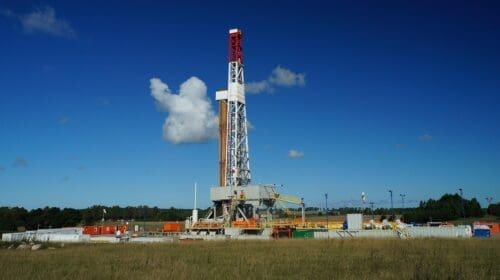While fossil fuel use continues to reign as the premier energy source, many look to source new and clean methods of providing the energy needed to meet the population’s demands. Pioneers of the energy transition exercise great expense and effort to improve existing strategies or build upon them to develop innovative solutions. Ross Faransso, CEO of Nexus PMG, is looking at the trash and thinking of turning it into a treasure. While converting to renewables progresses, he sees the value in converting waste to value as the next big clean energy solution.
According to Faransso, waste can be utilized to create renewable natural gas, and many speculate that it could eventually replace natural gas derived from fossil fuels. The ability to be sent through existing infrastructure like pipelines makes renewable natural gas incredibly attractive, in addition to its clean energy benefits.
“Renewable natural gas or RNG can originate from a few sources like food waste, landfill gas high in methane, and even dairy manure,” says Faransso. “They all go through a type of digestive system or process to become RNG.”
Depending on the type of waste, disposal costs potentially carry extraordinary prices. If not properly disposed of, penalties and the ramifications could further impact budgets. Finally, fines associated with improper waste removal have been known to cause businesses to close their doors, and criminal proceedings have been known to follow. Companies have sometimes attempted to shortcut and dispose of E&P waste in local landfills. When those contents become exposed and comingle with everything else in that landfill, the illegal dumper must now take responsibility for everything present, not just the waste they incorrectly left behind.
With high disposal costs and hefty fines associated with not following the correct guidelines, the costs associated with minor infrastructure upgrades where needed certainly outweigh the potential for a negative outcome with waste removal. Additionally, that infrastructure upgrade is required only at the beginning, and once completed, it allows for repeatedly regenerating income as the product travels through it.
Faransso says the opportunities in waste conversions surpass RNG. Increased interest and development are surrounding aviation fuel, and with mandates to increase regulation, the look to waste conversion for sourcing continues to grow. The attention paid to hydrogen is gaining momentum, especially when analyzing its use in the heavy trucking industry.
“Feedstock is mostly biomass, and there is a big demand for it overseas,” says Faransso. “Some infrastructure development would be needed in areas like hydrogen development, but its main focus wouldn’t be everyday driving.”
Although some infrastructure is needed, Faransso sees a promising future for hydrogen development. He feels Texas and the Gulf Coast are strategic locations for participating in the energy transition, with benefits rooted in waste conversion.
“I think Texas and the Gulf Coast will be leaders in the energy transition,” says Faransso. “Its existing infrastructure allows for multiple uses. As a result, many owner-operators are playing a large role with their financial means to embrace new technology. Hydrogen offers an abundant pool of opportunity for engineers and scientists.”
Nick Vaccaro is a freelance writer and photographer. In addition to providing technical writing services, he is an HSE consultant in the oil and gas industry with twelve years of experience. Vaccaro also contributes to SHALE Oil and Gas Business Magazine, American Oil and Gas Investor, Oil and Gas Investor, Energies Magazine and Louisiana Sportsman Magazine. He has a BA in photojournalism from Loyola University and resides in the New Orleans area. Vaccaro can be reached at 985-966-0957 or nav@vaccarogroupllc.com.
Oil and gas operations are commonly found in remote locations far from company headquarters. Now, it's possible to monitor pump operations, collate and analyze seismic data, and track employees around the world from almost anywhere. Whether employees are in the office or in the field, the internet and related applications enable a greater multidirectional flow of information – and control – than ever before.









